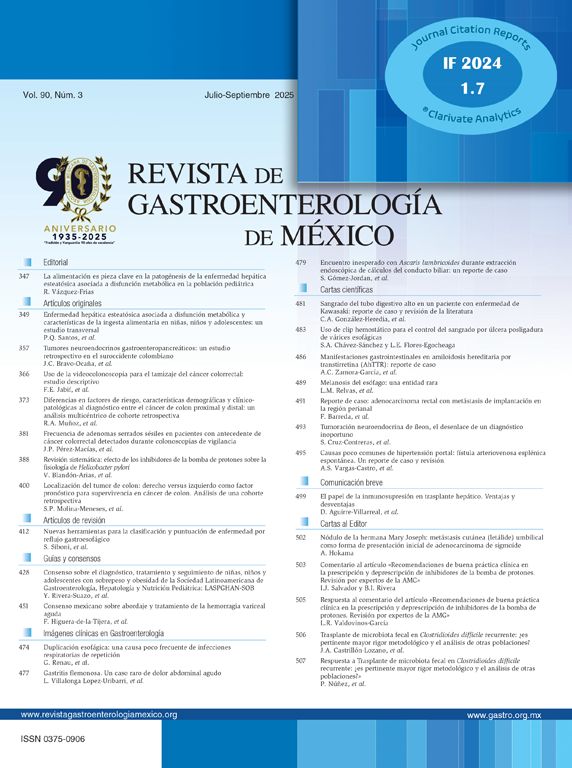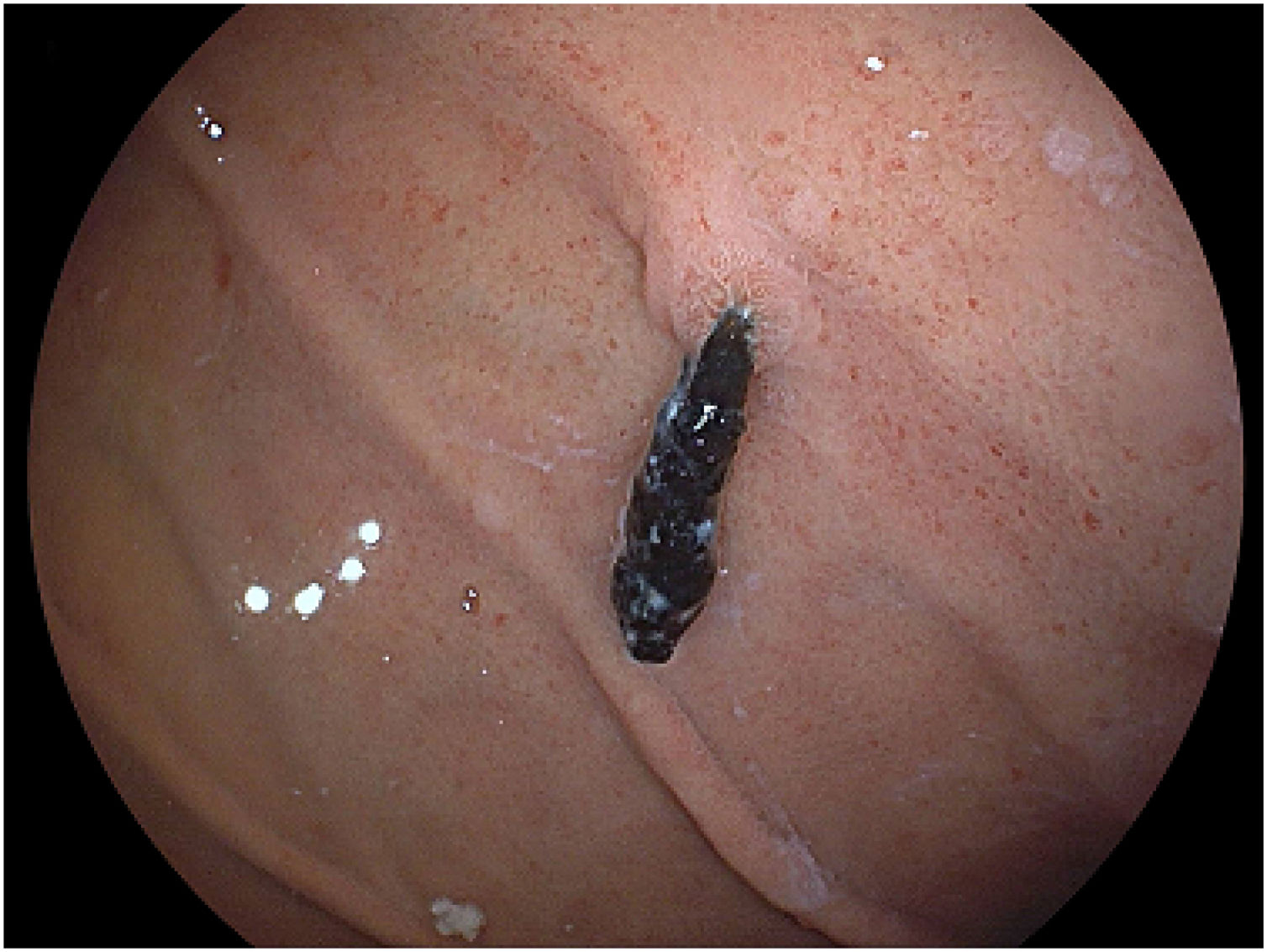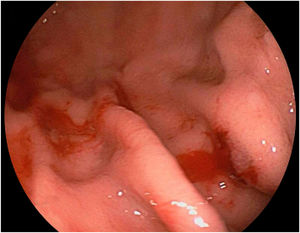A 76-year-old man underwent esophagogastroduodenoscopy (EGD) in 2017, as surveillance after gastric endoscopic submucosal dissection (ESD). Examination revealed a post-ESD scar and a 4 mm sessile polyp in the gastric fundus, removed through cold forceps biopsy (Fig. 1). Persistent bleeding at the polypectomy site was successfully controlled by the placement of 2 endoclips (Resolution Clip, Boston Scientific Co., Marlborough, Massachusetts, USA) (Fig. 2). Histology study of the resected polyp identified hyperplasia. The following year a gastric metachronous lesion was detected and a second ESD was successfully performed. Endoscopic control in 2019 showed post-ESD scars and the continued presence of the 2 hemostatic endoclips at the polypectomy site (Fig. 3). Another surveillance EGD was recently carried out and revealed one hemostatic endoclip still in place, with no significant alterations of the surrounding mucosa (Fig. 4). Only one previous report has described a 2-year retention of a hemostatic clip in the duodenum, secondary to gastrointestinal bleeding.1 Most authors agree that the type of endoclip used is a determining factor for its prolonged retention at the application site.2,3 The incidental detection of retained endoclips does not modify their original indication.3,4
Ethical considerationsThe authors declare that this article contains no personal information that can identify the patient described, making the patient’s informed consent unnecessary for the publication of this article.
Financial disclosureThe authors declare that no funding was received from any public or private institution for the preparation of this study.
Conflict of interestThe authors declare that they have no conflict of interest related to this publication.
Please cite this article as: Arantes V, Aliaga Ramos J. Retención inusual de un endoclip hemostásico por un periodo de 5 años. Rev Gastroenterol Méx. 2023;88:175–176.











